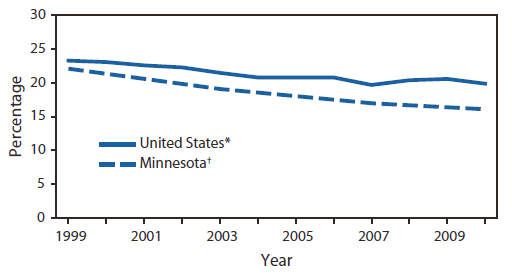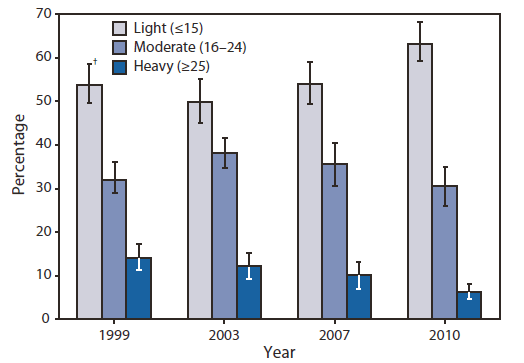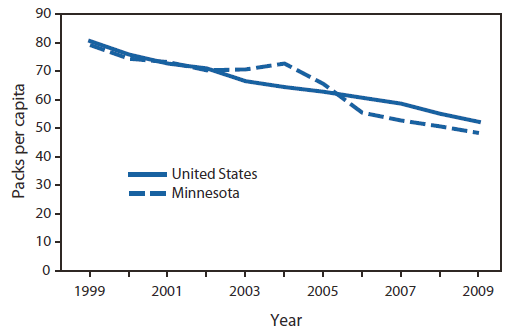* Based on data from the Minnesota Adult Tobacco Survey, conducted in 1999, 2003, 2007, and 2010.
† 95% confidence interval.
Alternate Text: The figure above shows the percentage of current light, moderate, and heavy smokers, by year, based on number of cigarettes smoked per day in Minnesota during 1999-2010. The daily average number of cigarettes smoked by current smokers decreased from 14.3 in 1999 to 12.2 in 2010. In addition, the proportion of current smokers who smoked ≥25 cigarettes per day decreased steadily, from 14.3% in 1999 to 6.3% in 2010. From 2007 to 2010, the proportion of current smokers who smoked ≤15 cigarettes per day increased from 54.1% to 63.2%.
 ShareCompartir
ShareCompartir





